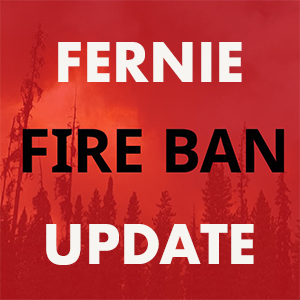Wildlife in BC have a better chance to survive thanks to changes to this year’s hunting and trapping regulations. But more still needs to be done to protect vulnerable wildlife from mounting pressures.
The Province recently announced the updated 2020 hunting and trapping regulations, which includes a ban on wolverine trapping, restrictions to motor vehicles and e-bikes, and an end to the harmful feeding of ungulates.
“The regulations are a step in the right direction towards helping to rebuild wildlife populations,” says Eddie Petryshen, Wildsight Conservation Specialist.
The provincial government asked for citizen engagement on the regulatory changes, and the public spoke up loud and clear, leading to positive changes for wildlife.
For example, wolverine trapping is now banned within the Kootenay and Columbia regions. Wolverine populations have declined because of habitat loss, human pressure, and trapping. By instituting this change, the Province is giving wolverines a fighting chance to rebuild.
Wolverines weren’t the only animals given better protections. Antlerless elk (female and young elk) can’t be hunted anymore, in hopes of bolstering elk populations across the Kootenays.
Another problem area has been people feeding or baiting ungulates including moose, goats, deer, sheep, and elk. This practice increases the threat of disease transmission (such as Chronic Wasting Disease which is now present in both Montana and Alberta) and can wreak havoc with animal’s digestive systems, sometimes causing severe sickness or even death. The Province has now banned this destructive practice.
Showing a sign of the times, electric bikes have made it onto the provincial hunting guide for the first time this year. While trucks, quads and dirtbikes were banned from specific areas, e-bikes did not have the same restrictions until now.
“E-bikes allow people to cover a lot more ground and travel further into the mountains, disturbing and displacing wildlife and making wildlife more vulnerable,” says Petryshen. “E-bikes can be a great way to get around, but they have no place in areas that are closed to other motorized vehicles.”
Speaking of motorized vehicles, more motor vehicle restrictions were also put in place this year – 21 in the Kootenays alone.
“These proposed vehicle restricted areas protect important habitats for sensitive species that can’t handle the ever-increasing backcountry traffic, especially in combination with logging, mining, recreation, and hunting pressure,” remarks Petryshen.
Unfortunately, not everything in the 2020 guide is rosy for wildlife. One of the major issues the Province did not move forward on was a revised start date for marten trapping. In recent years, grizzly bears have been severely injured while trying to remove the bait from small box traps used to trap marten. If the government had pushed the start date for marten trapping until after bears are in hibernation, it could have saved needless injuries to bears. The BC government and trappers are working together to modify traps that could reduce the likelihood of grizzly bears being injured. It remains to be seen whether this will be an effective measure to reduce injuries.
Hunting and trapping regulations are only one tool in the toolkit to manage for wildlife and ecosystem health. We need standalone legislation that puts wildlife and ecosystem health in the forefront when making decisions on forestry, mining, agriculture, and recreation.
Until that happens, Wildsight will continue to push for protection of our vulnerable wildlife in a province with increasing pressures from human encroachment and industrial development taking precedence over wildlife in BC.


























